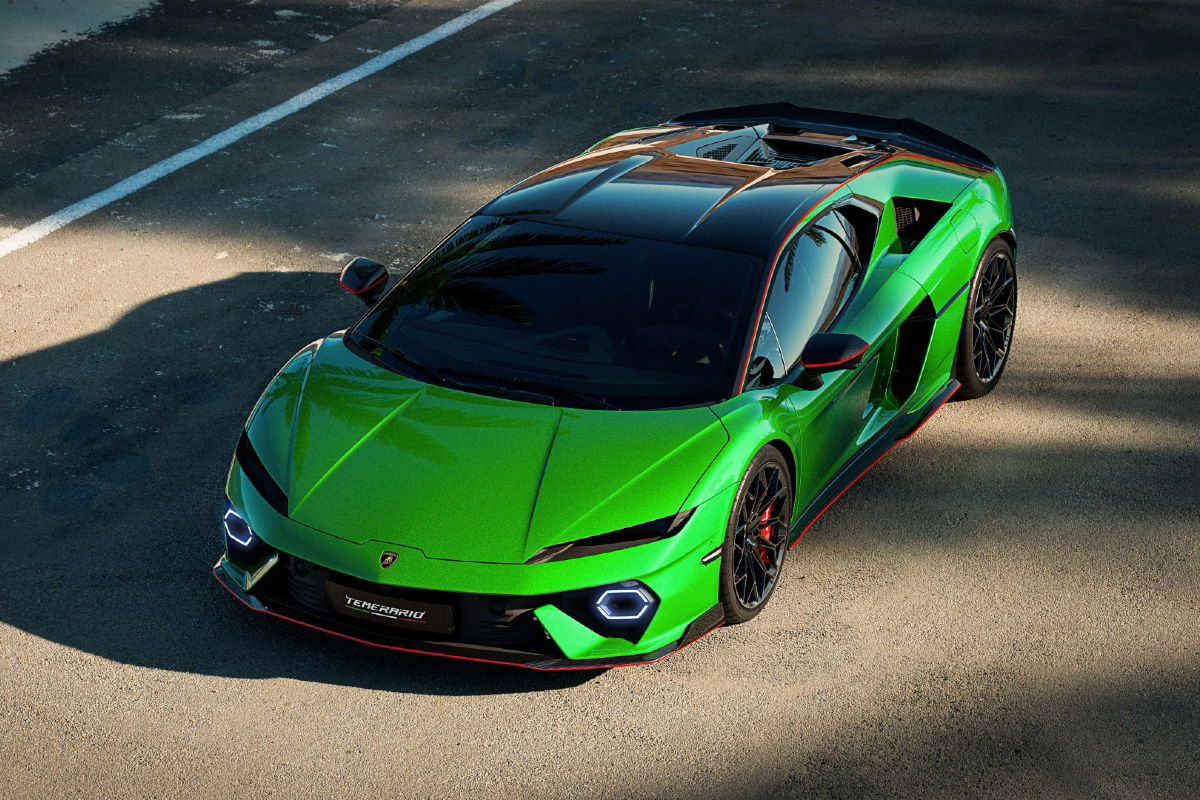Lamborghini is a brand based on emotion, with its model lineup – like that of Ferrari – leaning more into what you can feel and sense, rather than just what numbers on paper will tell you.
The Italian marque has arguably undergone its most significant changes in recent years since it under Audi’s ownership umbrella in the late 1990s, having recently adopted hybrid technology across its two supercars.
This has resulted in the sonorous V10 previously found in the Huracan and Gallardo being replaced by a twin-turbo V8 in the Temerario, while the V12 has remained alive in the Revuelto, albeit now with plug-in hybrid power.
But that doesn’t mean these cars aren’t fast, far from it with both being able to out-pace their predecessors, something which Lamborghini recognises.

New technology may be seen as a numbing of the excitement to some, however Lamborghini says it’s using artificial intelligence (AI) to not only help owners drive faster, but also make their vehicles better suit their driving style.
“We are already using AI – it’s not fully AI, it’s a kind of first step machine learning—for the torque management that is adopting torque distribution based on the surface and on the driving style of the driver,” Lamborghini CTO Rouven Mohr told The Drive.
“In the future, you can imagine that the car theoretically can even recognize your emotions and is adapting the controls based on the emotion.
“Because if the car would be smart enough to detect if you want to have fun, if the car is going a little bit more sideways, theoretically the algorithm could say, ‘okay, this guy wants to have a little bit more side angle. And it’s managing that rotation of the car in a different way.”

According to Mohr, these AI-based systems could help drivers to make smarter choices on track, and detect when they’ve learnt enough to ease back some of the restrictions in place – similar to how some video games adapt their difficulty level based on a player’s ability.
“If the algorithm is recognising every time, every corner, unfortunately the driver is using too much steering angle, it’ll create more understeer,” he added.
“If you have a steer-by-wire system, the algorithm is learning. Okay, now I don’t give the driver so much steering angle to avoid it.”

The recently released Lamborghini Fenomeno – based on the Revuelto – is the brand’s first car to get its new ‘6D Sensor’, a module which gathers all the data from the car’s systems to enact the algorithms.
“[The algorithm] understands the surroundings and the 6D sensor is giving the algorithm a much more precise information about the status of the car regarding the rolling, the pitching, because you have six degrees of freedom in the space and this sensor is measuring explicitly the motion of the body.
“If you have the precise information of the body movement, you are much more precise in the management of the control of the car. So this is the door opener for the future, let me say for the future.”




















Discussion about this post